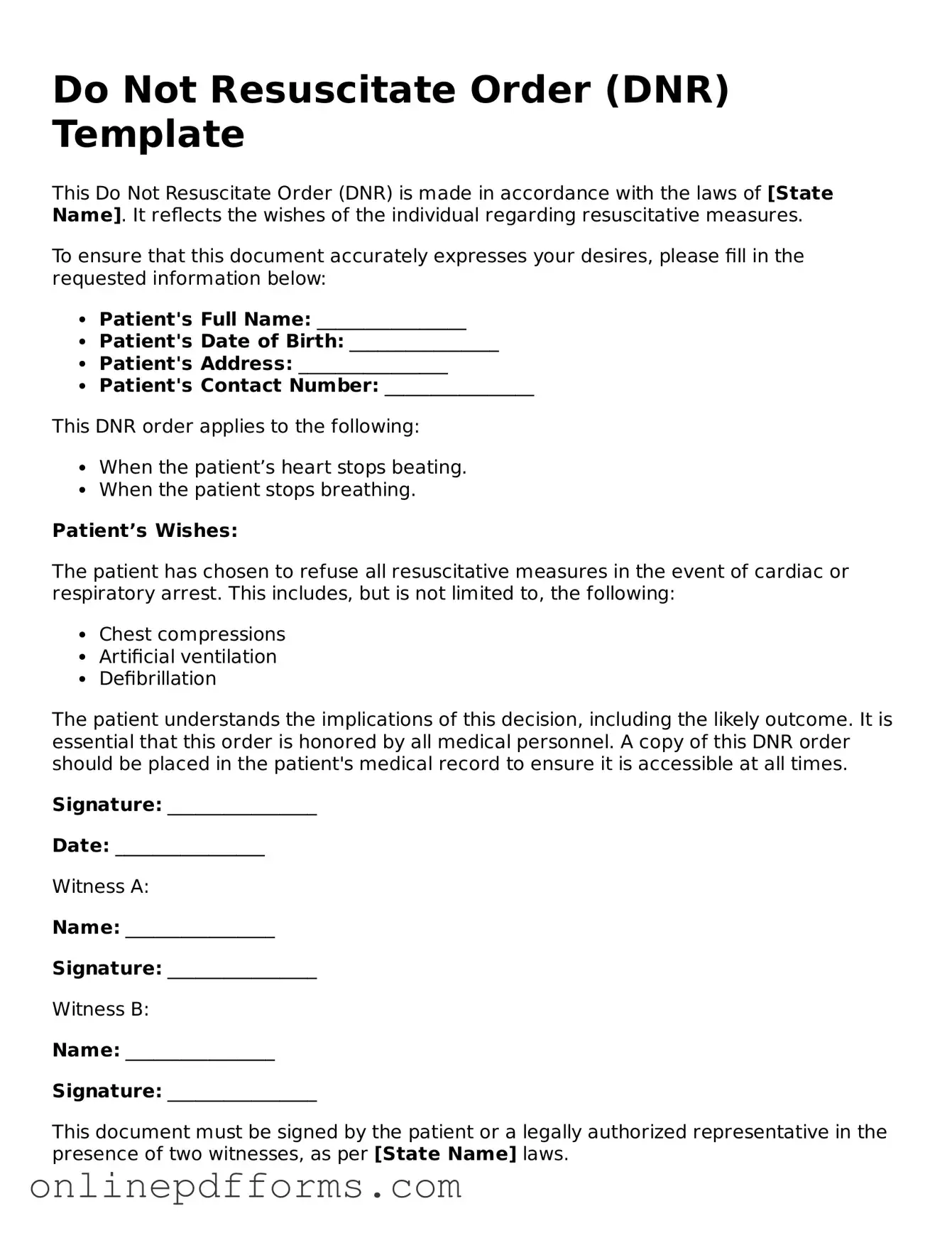Legal Do Not Resuscitate Order Form
A Do Not Resuscitate (DNR) Order is a medical document that indicates a person's wish to forgo resuscitation efforts in the event of cardiac arrest or respiratory failure. This form allows individuals to express their preferences regarding life-sustaining treatments. Understanding its importance can help ensure that medical care aligns with personal values and wishes.
To take the next step in expressing your healthcare preferences, fill out the DNR Order form by clicking the button below.
Open Do Not Resuscitate Order Editor Now
